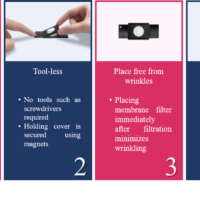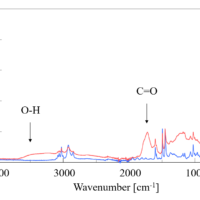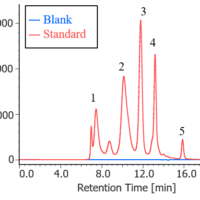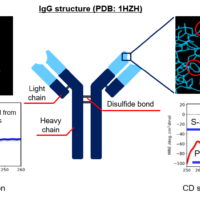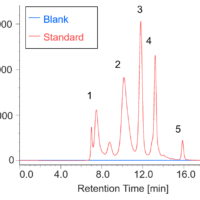UV/Vis detector
A UV/Vis detector detects components that absorb light between 190 and 900 nm. For example, aromatics, pigments, proteins, and drugs can be measured. By selecting the measurement wavelength, it is possible to measure the sample while suppressing the influence of interfering components (Fig. 8). In addition, the sensitivity can be improved by performing measurements at the wavelength where the maximum absorption occurs. By measuring the UV/Vis absorption spectrum at the elution peak and searching a library, it is possible to predict the components that are present. The purity can also be checked from the absorption spectrum.
Fig. 8 UV/Vis measurements of crude drug
Fluorescence detector
A fluorescence detector can measure fluorescence in the wavelength range of 220-900 nm. Since the fluorescence wavelength depends on the excitation wavelength, the results are more selective than can be obtained using a UV/Vis detector. Since the excitation and fluorescence wavelengths can be switched programmatically, it is possible to simultaneously detect fluorescent substances with different wavelengths if the elution time is different (Fig. 9).
Fig. 9 Fluorescence measurement using wavelength programming
RI detector
The RI (refractive index) detector detects the differences in the refractive index of materials. Most compounds have a different refractive index to that of the solvent, so any component can be detected. However, refractive index variations also occur due to changes in temperature and solvent composition, so it is necessary to perform measurements at constant temperature and in isocratic solvent ratio mode (Fig. 10).
Fig. 10 Comparison between RI measurement (upper) and UV/Vis measurement (lower)
Comparison of detectors
Table 3 summarizes the characteristics of UV/Vis, fluorescence and RI detectors. UV/Vis and fluorescence detectors are highly sensitive and they can measure the sample selectively. The gradient elution method can be used because the detectors are less sensitive to temperature. The RI detector has the advantage of being able to detect a wide range of components. However, it is sensitive to temperature, so the gradient elution method cannot be used. Although they are somewhat expensive, evaporative light scattering detectors are available that can detect a large variety of components with high sensitivity and can be used with gradient elution.
Table 3 Comparison of UV/Vis, fluorescence and RI detectors
| Detector | Sensitivity | Selectivity | Temperature effect | Gradient elution method |
| UV/Vis | – ng | High | Low | Applicable |
| Fluorescence | – pg | Very high | Low | Applicable |
| RI | – μg | N/A | High | N/A |

